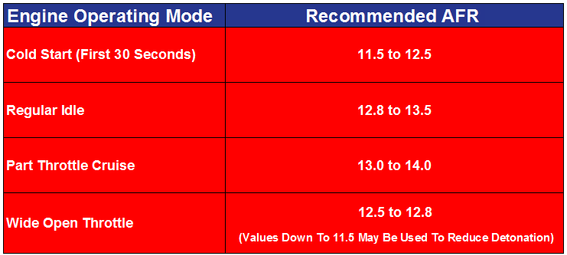Engine Tuning Guide
Engine Tuning Principles and Recommended Guidelines
Customers Often Ask Us For Help With Their Engine Tuning

Engine Compression Ratio - Basics & Overview
The most common mistake that we encounter is excessively high compression ratio. Besides serious starting difficulties, the problem usually manifests itself as extreme detonation (spark knock). Spark timing must then be retarded, far back from the maximum brake torque (MBT) value, resulting in a loss of torque. For any given compression ratio, there exists a minimum gasoline octane requirement, as shown in the chart shown at the right: (ref: Advanced Engine Technology by H. Heisler, pp. 177).
The chart at the right shows that this is not the case (ref: Internal Combustion Engine Fundamentals by J. Heywood, pp. 843).

Octane Requirement Chart

Compression Ratio Effect Chart
Engine Ignition Timing - Basics & Overview
We often receive inquiries about optimizing engine ignition timing during dyno tuning. Very sensitive and precise dyno tests are required to determine MBT timing. The chart at the right shows why (ref: The Internal Combustion Engine in Theory and Practice by C. F. Taylor, pp. 443).






